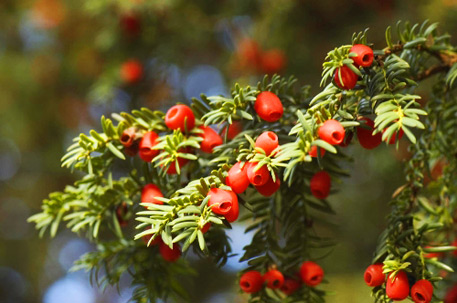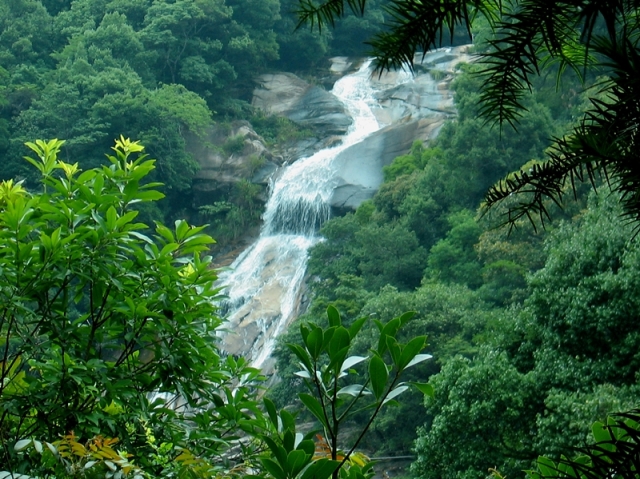Inspiring management in protecting Chinese yew (Taxus chinensis)
Species Introduction
Chinese yew (Taxus chinensis), as one of Category 1 protected species in China, has been listed in IUCN Red List as endangered species. It scattered distributes in southeastern China. The population of wild Chinese yew is estimated to appropriate 800,000 individuals. As a evergreen plant, Chinese yew is a unique species surviving from the cretaceous period in China. The ratio of female to male plants is approximately one to nine.

Figure 1. Chinese yew
Threats
The population of Chinese yew decrease rapidly (reduction is more than 50%) since nineties after scientist found that it can produce taxol(TAX) used to treat cancer (Thomas, 2013). Before paclitaxel(taxol) synthesizing totally and successfully achieves in laboratory, extracting TAX from genus Taxus plants is the only way to acquire TAX for medicines. But each kilogram of paclitaxel requires a live stripping of 10 tons of yew bark. Moreover, the other parts of the plant, such as roots, leaves and bark can be used in traditional Chinese medicine to treat various diseases. There are increasing number of consumers are attracted by the high medicine value of Chinese yew. This led to the indiscriminate cut and use of Chinese yew. Unfortunately, the generation lengths of this species are estimated to over 40 years because of the slow growth rates and longevity. Its regeneration ability is unable to meet the demand so the population of this species is experiencing a dramatic falling.
Inspiring Management Methods in China

Figure 2. Yeliang Mountain conservation park
As many other endangered species, establishing natural reserve and conservation park is an available method to protect Chinese yew, so the government established Yeliang Mountain conservation park located in southeastern China in 1997. This approach can also be used for protecting many other species. However, it still can not effectively forestall the illegal logging of yew. To some extent, establishing conservation area would hinder the development of medicine. It is illegal to cut the tree in the conservation area in the conservation area. The less yew trees can be cut and obtained, the less TAX extracted from the yew can be used for medicine and researches. In purpose of meet the demanding while protecting the yew, the government conducts some inspiring managements to encourage the artificial propagation of yew so that some qualified individuals and companies can be authorized to collect the wild yew branches to conduct cutting propagation. At the same time, it is prohibited to use collected branches for the construction of TAX material base or other commercial activities. When the authorized individuals or companies collect the branches from the yew trees, it is recommended to collect upper new-born branches from the strong yew tree. This can effectively reduce the damage to the yew and increase the survival rate of cutting seedlings. After the cutting plant grows independent of the parent, the new plants can be used for commercial activities. This method not only contributes to increase the yew population, but also considers the huge demanding of yew.

Figure 3. Yew cuttings have been coaxed to form new roots
Conclusion & Inspiration
Usually, when we talk about the biodiversity conservation, the first idea to protect a particular species is establishing the conservation park. However, doing so often does not effectively increase their numbers, especially for some species that grow slowly and have a long generation length (e.g. Chinese yew). In this case, it teaches us sometimes authorize and encourage qualitied individuals to cultivate the endangered plant with asexual propagation could be another choice except establishing conservation park.
Wenjun He
u5983883
Reference
Thomas, P., Li, N. & Christian, T. 2013. Taxus chinensis. The IUCN Red List of Threatened Species 2013: e. T42548A2987120. http://dx.doi.org/10.2305/IUCN.UK.2013-1.RLTS.T42548A2987120.en.
Picture
Figure 1. : http://www.shaoxing.com.cn/3nong/2014-06/17/content_2346368.htm
Figure 2. :http://www.wpren.com/forum.php?mod=viewthread&tid=91344
Figure 3. :http://news.youboy.com/cp2427544.html
